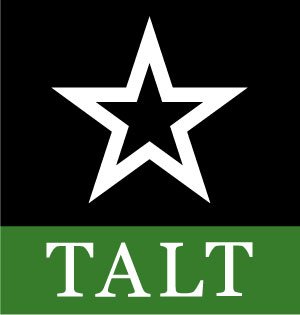Bill Moore Mitigation Bank
Ennis Ranch, one of the three Rosewood Ranches located in Trinity River Basin of north Texas, recently added a mitigation stream bank to its operational mix that includes an historic cattle business as well as wildlife enterprises and sand and gravel mining.
“Our family’s philosophy of land management has been constantly evolving since the original ranch tracts were acquired in the 1880’s,” said Wilson Sands, who along with his brother Storm and the family’s long-time ranch manager Kenneth Braddock oversees the ranch operation. “Today, we manage at the intersection of production agriculture, conservation and bottom-line business.”
The Bill Moore Mitigation stream mitigation bank and its attendant conservation easement, held by TALT, encompasses 262 acres or about one half of one percent of the acreage of the 11,000-acre Ennis Ranch. The ranch, owned and operated as part of the Caroline Hunt Trust Estate is less than an hour’s drive from downtown Dallas. While its location increases the land’s value, it also increases the risk of division if the land doesn’t produce a strong return.
“Undoubtedly, the ranch is a valuable asset, but it has to generate solid returns and not just good feelings,” Wilson said. “Because of the ranch’s location and its natural attributes, we are in a position to provide mitigation credits to infrastructure projects and businesses developing new enterprises in the Metroplex.”
Selling mitigation credits is the next logical addition to ranch’s income stream. A generation ago, under the leadership of Sands’ uncle John Bunker Sands, conservation became a hallmark of the Rosewood Ranches. Working alongside Braddock, he embraced the principles of HRM and began balancing the needs of the livestock operation with those of wildlife.
Because of Bunker Sands and Braddock’s conservation work, the ranch not only produced cattle, but the improved habitat allowed the family to offer waterfowl hunting leases as well.
“The wildlife is also a point of connection for the extended family, so it plays an important role in the long-term sustainability of the ranch,” said Wilson who noted his interest in the ranch was fostered on childhood duck hunting trips with his uncles.
In addition, Braddock developed a commercial crawfish operation to maximize the usefulness of the wetlands when they were flooded and unable to be grazed. The family also developed a commercial sand and gravel mining business on a separate part of the ranch. Braddock’s vision and involvement in the sand and gravel operations ensures reclamation of mined areas, transforming them into pristine wetlands and fishing lakes.
Bunker also had a keen interest in the wetlands along portions of the 4.5 miles of Trinity River frontage. In the 1990s, he conducted due diligence on the effectiveness of man-made wetlands as the basis for mitigation banking. His death shelved the plans for about a decade. Eventually about 2,000 acres of wetlands were constructed and/or restored.
“Uncle Bunker was a visionary,” Wilson said. “He was also an informed reader of wetland policy and a quick study of restoration techniques, often visiting with like-minded land owners to see failures and successes.”
As a testament to his visionary conservation the family created the John Bunker Sands Wetland Center as a complement to the East Fork Wetlands Project they partnered with the North Texas Development District. The series of constructed and improved wetlands on the family’s East Fork Trinity Ranch acts as a natural filtration system and provides raw water for 1.6 million customers in North Texas.
From a technical standpoint, stream banking is a different undertaking than wetlands banking, but in both cases the goal is to restore and enhance degraded aquatic resources and benefit by selling mitigation credits for lost ecological functions.
“Creating a stream mitigation bank is not a quick or easy process, but it fit into our family’s conservation and business models,” said Wilson noting the project started in 2012 and the first credits were released in 2018. “As a family, we have the benefit of ‘patient capital.”
The completion of the Bill Moore stream bank doesn’t necessarily mark the family’s last foray into mitigation banking. “We feel like we have a few more opportunities on our Trinity River ranches if the demand for mitigation credit is there,” Sands said. We also continue to visit with other land owners about mitigation and can provide capital and expertise to permit and execute mitigation plans for additional banks in other watersheds by partnering with them. The best locations for future mitigation sites remain in watersheds impacted by development, which is typically the triangle of Dallas, Houston, and San Antonio.
While no one can predict what the future holds, Wilson considers TALT a natural partner in the business of conservation.
“Mitigation banking and conservation easements are complicated; TALT’s staff was incredible,” Wilson said. “Plus, TALT was founded to work with agricultural producers. We have been—and always will be—primarily beef producers. TALT understands what we do.”
“Mitigation banking and conservation easements are complicated; TALT’s staff was incredible,” Wilson said. “Plus, TALT was founded to work with agricultural producers. We have been—and always will be—primarily beef producers. TALT understands what we do.”




